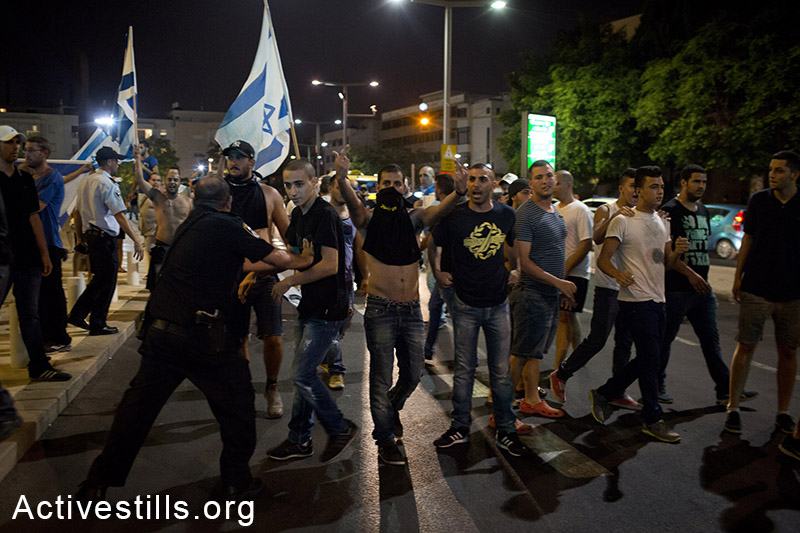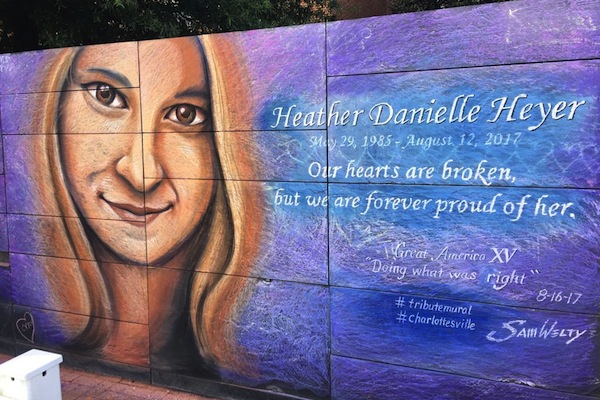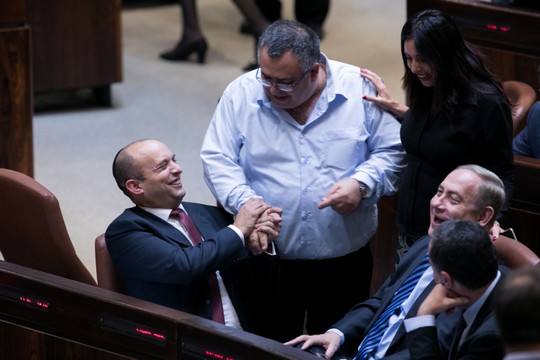CHARLOTTESVILLE, VA — Three years ago, on a broiling July night, a group of friends and I were sitting outside a cafe in an upscale Tel Aviv neighborhood, trying to ignore the “death to Arabs” chants coming from the square opposite us. It was the middle of the Gaza war, and we had just come from an anti-war protest at a nearby plaza. We’d left quickly as it was winding down; groups of young men had started filtering in, scanning the depleting crowds, their necks taut. It was one of numerous protests at which members of Israel’s far right had assaulted leftists during that never-ending, bloody summer.
The hundred or so far-right counter-demonstrators who had amassed in the square opposite the cafe soon began marching through the city, singing and waving Israeli flags. Quiet returned, and the square again assumed the outward appearance of normality. It’s an ordinary space: benches, a children’s swing set, trees, manicured hedges. Boutique coffee shops line its perimeter. It perfectly encapsulates the Tel Aviv “bubble”—that criticism leveled at a city whose residents are perceived, rightly or wrongly, to have little understanding of the violence that stalks much of Israel-Palestine, or if they do, to at least have the luxury of being largely removed from it.
And yet that square, at least in my mind, would never look quite the same. I used to pass by it on a weekly basis, right up until I left Israel-Palestine in late 2016. And though it was only ever populated by young families and solitary readers, that group of braying young men—jumping up and down, screaming racist epithets—was always there. Winter and summer, rain and shine, night and day, they lurked: an atmospheric disturbance, like looking at the horizon through heat haze. I would walk through the square or sit in it in silence, and hear “death to Arabs” every time.

After I left the country those memories retreated, although they didn’t disappear. They were, or so I had thought, tightly attached to that physical space. But here in Charlottesville, where I moved just a few months ago, those apparitions have resurfaced. I was not there to witness the white supremacist rallies on August 11 and 12, but the sensation of an environment upended by political violence was unmistakable.
For that is one of the subtler, longer-term effects of violence: it punches a hole through whatever membrane it is that compartmentalizes experiences and recollections in our heads. At the best of times, the brain has a strange habit of swapping elements of our memories around, tweaking people and places, adding here and subtracting there. The shock of violence, whether experienced directly or indirectly, exacerbates those peculiarities; the memories associated with it fragment, pieces of them drifting through our conscious and subconscious, disloyal to any space or structure.
When violence flashes through our immediate environment again, a vacuum opens up and sucks those unmoored specks of memory into a new home. And so it is that when I walk past the statue of Thomas Jefferson at the University of Virginia, which hundreds of white supremacists marched past on August 11 bearing torches and chanting “blood and soil,” my mind’s eye projects onto the scene a crowd of Israeli extremists, chanting “death to Arabs.”
There are, clearly, vast differences between the situations in the U.S. and Israel-Palestine. The structural racism in each country has developed in different ways. State violence often, although not always, expresses itself differently. The statelessness of millions of Palestinians has no analogue in the modern U.S., while the scale and scope of both countries’ histories are of a different order.
Moreover, the two demonstrations were in a sense each other’s negative image: the protest in Tel Aviv was organized by left-wing anti-war activists; the U.S. rally was organized by neo-Nazis. And, of course, while there were injuries in Tel Aviv that night, and at other protests during the 50-day war, no one suffered the fate of Heather Heyer, who was murdered by a white supremacist.

Yet those contrasts shouldn’t prevent us from examining echoes across different situations, not least the perverse irony of white supremacists in one country chanting “Jews will not replace us,” and Jewish supremacists in another country chanting “death to Arabs.” And this is the heart of the matter: racial supremacy is racial supremacy, and the violence at both demonstrations, at the time they occurred, was emblematic of broader processes of right-wing radicalization taking place in each country.
The level of hatred and bigotry in the Israeli-Palestinian public sphere has only deteriorated since that summer, fueled by the most right-wing government in the country’s history. In the U.S., the election of a racist, misogynist fantasist as president has brought the rhetoric to almost the same level of toxicity as that emanating out of Jerusalem. White supremacy is no longer lapping at the edges of the day-to-day American political discourse: it is an integral part of it.

Beneath the rhetoric, however, lies a more fundamental issue: each country has proven incapable, to a greater or lesser extent, of fully coming to terms with its history. Both variously deny, suppress, or rewrite parts of their past. And both, with predictably devastating results, refuse to acknowledge the extent to which those histories aren’t history at all: they are here, with us, in different guises, but upholding the same structures of racial inequality, discrimination and segregation. Jim Crow lives on. The Nakba continues.
From that perspective, there are striking resonances between Charlottesville and Tel Aviv. Both cities have a bohemian, liberal reputation. Both are seen as a model of harmony and co-existence, a “bubble” in their respective surroundings. The everyday state and structural aggression that permeates both cities—police brutality against minorities and people of color, for example—has failed to dislodge those fantasies.
These myths have also, until now, withstood the presence of the clues to these cities’ violent histories embedded in the landscape—a Confederate statue in Charlottesville, traces of a depopulated and destroyed Palestinian village in Tel Aviv (and there is still no public debate in Israel comparable to the one currently taking place in the U.S.).
And that is exactly what demonstrates the scale of the task: as long as our recognition and understanding of racial supremacy begins and ends with groups of enraged men chanting and beating up people of color, leftists, and anyone else they see as a target, we will never approach the depth of reckoning needed to effect meaningful change.
Racist mobs are not the load-bearers of supremacism; they are its outgrowths. Income inequality; disparities in incarceration rates; education gaps; housing discrimination; lack of representation: these are the constant reality of the effects of racial supremacy, and they pose a far greater challenge than the iconography of statues, ruins and flags. It is our tragedy, and our indictment, that it takes physical violence to make us see what has always been there.
———————
As I was writing these words on October 7, a group of torch-carrying white supremacists—led by Richard Spencer—again gathered at the Lee statue in Charlottesville, not two months after one of their number murdered Heather Heyer. May her memory be a blessing, as well as the memory of all those killed by the racist mentality she died protesting.

